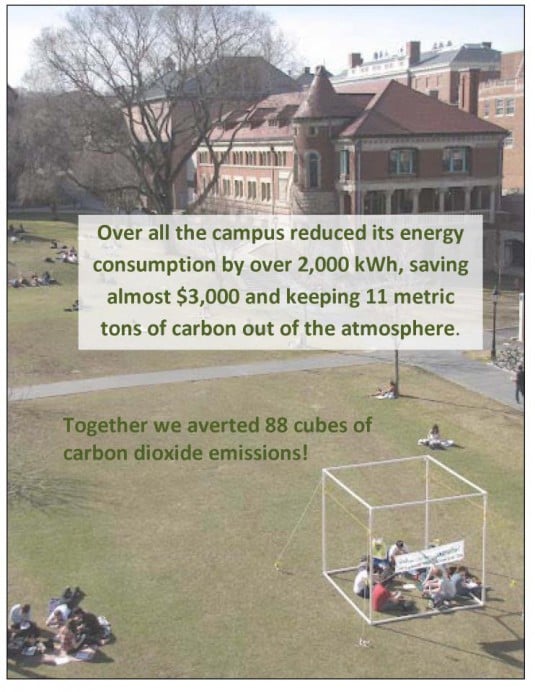
April 28, 2012
Racing Past a Gigawatt
The college experience, a quintessential right of passage, has always been about camaraderie, experiences, and learning. Whether your experience was full of all-nighters, hair-pulling group projects, or last page computer crashes; in the end college prepares us for the “real world” and all its challenges.On some campuses, learning to deal with real world challenges includes […]
The college experience, a quintessential right of passage, has always been about camaraderie, experiences, and learning. Whether your experience was full of all-nighters, hair-pulling group projects, or last page computer crashes; in the end college prepares us for the “real world” and all its challenges.
On some campuses, learning to deal with real world challenges includes tackling issues surrounding sustainable living. Energy conservation and water conservation are essential parts of living a more sustainable life, and what better way to learn then with a little competition?
The Campus Conservation Nationals, in its 3rd year, is a college residence hall competition that aims to empower students to conserve electricity and water. This year the competition had a national goal, “Race to a Gigawatt”.
Students ‘whizzed’ past that goal to reach 1.7 Gigawatts, the equivalent of taking 151 US homes off the grid for a year, and accomplished all this in just under three months.
The students also saved 1.5 million gallons of water, equivalent to over 10,000 hours of showering… Stinky students maybe?
“Smells Bad!” Youtube clip from Labyrinth
Joking aside, there really was a lot of great competition and participation from students, “Nearly 250,000 students at 150 colleges and universities across the U.S. and Canada,” reported the organizers. Here is a map of the participating colleges.
View CCN 2012 Participants in a larger map
So the students saved a lot of energy and water, great! But I think the best part of the whole effort is how they were able to learn, and learn together as a community.
Brown University, one of the schools recognized by the competition, mentioned their level of involvment during a recent webinar: “Our goal was 1,000 students registered… and we really had a focus on community awareness,” said Kai Morrell, a staff member that helped to lead the student initiative at Brown, “we had probably 8,00 to 9,000 commitments made by our students.”
Brown University, Carbon Cubes
One of the many great ways students were successful in achieving their goals was with visualizing the effects they were having. Some of the visualizations were hands on experiences like peddling a bicycle to power a light bulb, or showing one ton CO2 in the form of a cube, and most importantly, the campus Building Dashboards; web-based tools that were used “to track consumption and competition rank, and communicate with [dorm] occupants and organizers”.
While the competition’s organizers recognized only some of the schools, in the end all of the students were winners. The real prize is the information they learned, the memories they made, and the challenges that they as communities overcame. They were able to prove to themselves, and to countless others, that by working together and in creative ways, we can solve the global problems that we all have to face.







